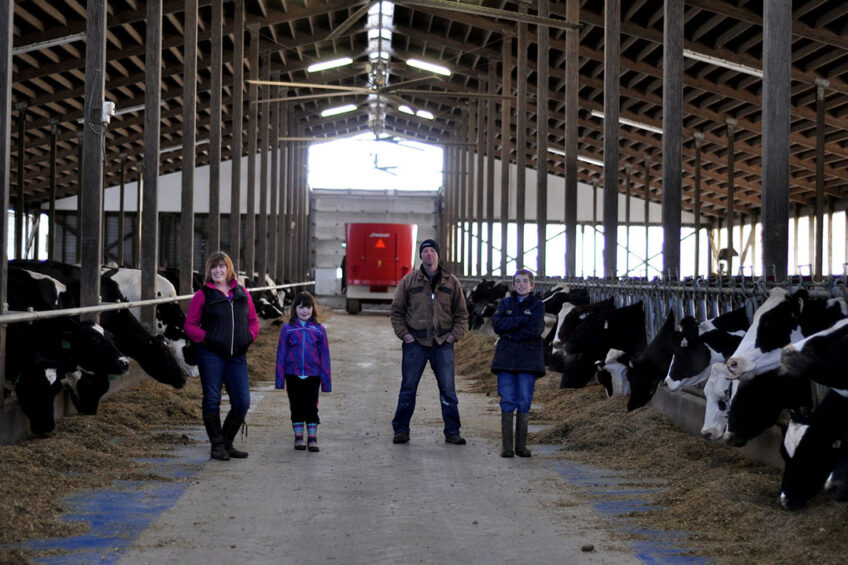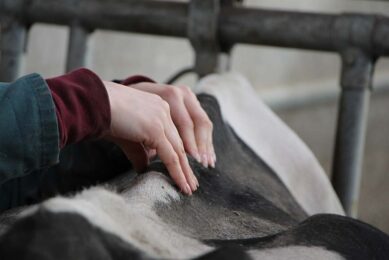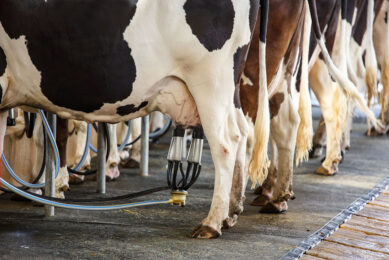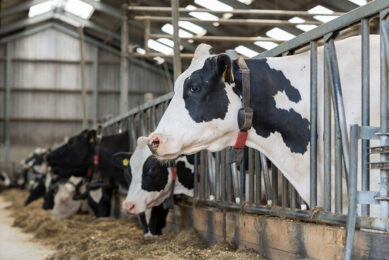Canadian dairy farmers battle for extra quota

Dairy farmers in Canada are currently finding it tough to find extra butterfat quota to purchase.
The Canadian Dairy Commission calculates the country’s milk production target on a monthly basis. This target, or total quota, is expressed in kilogrammes of butterfat and is monitored and adjusted to reflect changes in demand and supply. Each month, the national quota is allocated to regional pools which then issue its share to producers.

If farmers fall under this quota, credits can be accumulated and held for use at a later date. Farmers can currently hold up to 30 credits, but this is being reduced to 15 in 2021. The opposite applies with over credits when farmers overproduce, but they can only ever go 10 days over.
Originally from Northern Ireland, William and Vicky Morrison have been farming in Canada since 2007. The couple, together with their children, now run a dairy farm just outside Woodslee in Ontario where they milk 180 cows, however, finding extra quota is proving difficult. When the family moved to the farm in 2013 it came with 178kgs of daily butterfat quota. After purchasing 2 neighbouring farms totalling 165 acres, the Morrisons updated the milking equipment and manure handling facilities. “We now farm 300 acres and have almost 250kgs of daily butterfat quota,” said Ms Morrison.

“There are 180 registered Holsteins milking cows, 40 dry cows and 190 youngstock. Cows are split into mature and first lactation groups for feeding purposes. With the quota we have to produce the same amount of milk per day so we try to calve 18 to 25 cows per month to keep cow numbers and therefore milk supply consistent,” said Ms Morrison, adding that the cows are milked twice a day and achieve 4% butterfat and 3.25% protein. The milk all goes to Dairy Farmers of Ontario for use in cheese making.
Also read: Should Canada phase out supply management?
While the Morrisons would like to increase their daily quota in the future it is proving difficult as extra quota is hard to find. “There are plans to increase the size of our heifer and dry cow barn and to add more quota. Our farm can produce 300kgs of butterfat per day and that is our goal. Quota is very hard to get right now. We always bid but only ever achieve an additional 0.5kg per month,” said Ms Morrison. At the most recent bidding in the August exchange she got a surprise: “I was able to secure 1.1kg on the exchange so I have a CAN$26k bill for that.”
The latest published quota prices are from June when the price in Ontario was CAN$24,000 per kg of butterfat quota. The highest price quoted that same month was CAN$41,815 per kg in Alberta. To quantify demand, in Ontario in June the demand for quota was 16,991.30 kgs but there was only 598.98 kgs available for sale.
Join 13,000+ subscribers
Subscribe to our newsletter to stay updated about all the need-to-know content in the dairy sector, two times a week.










